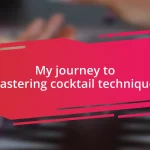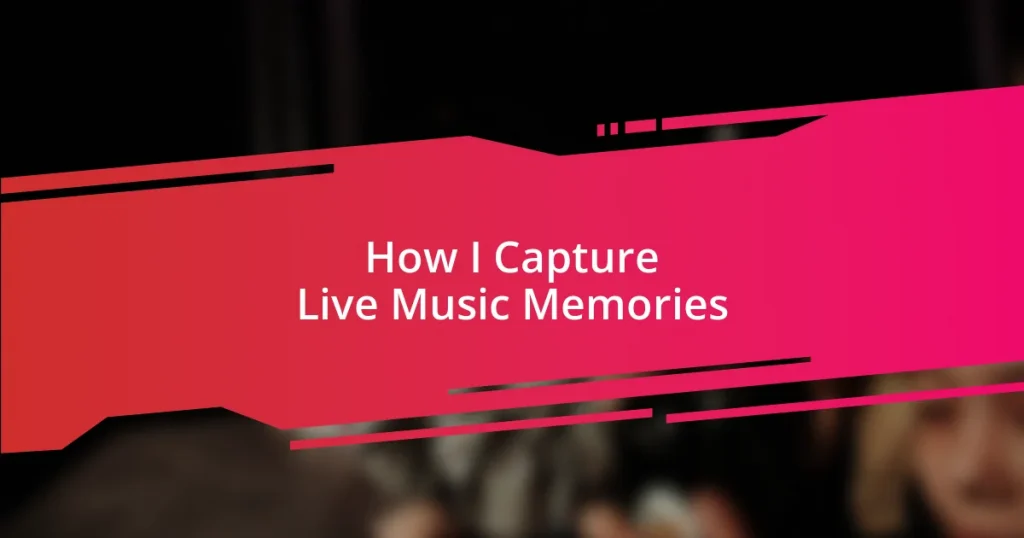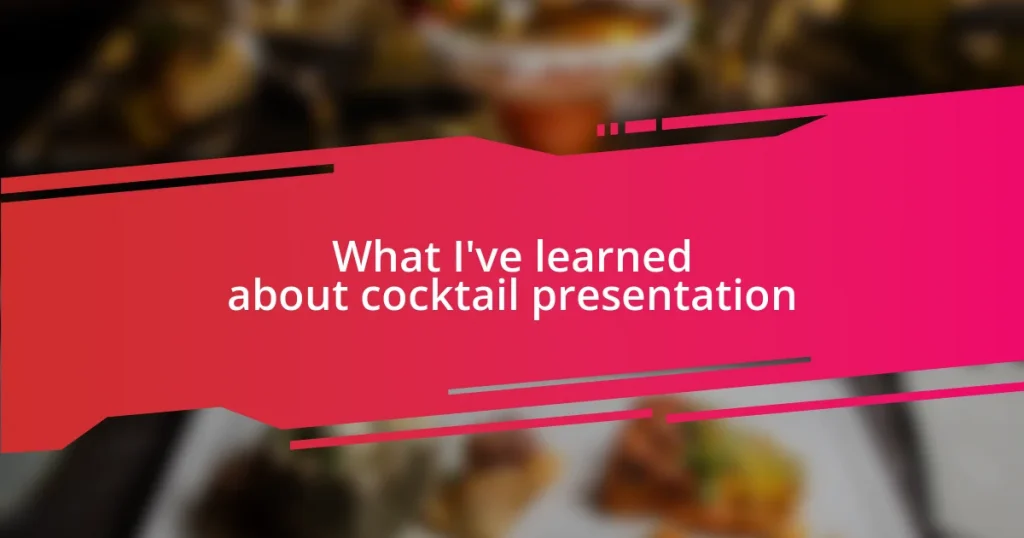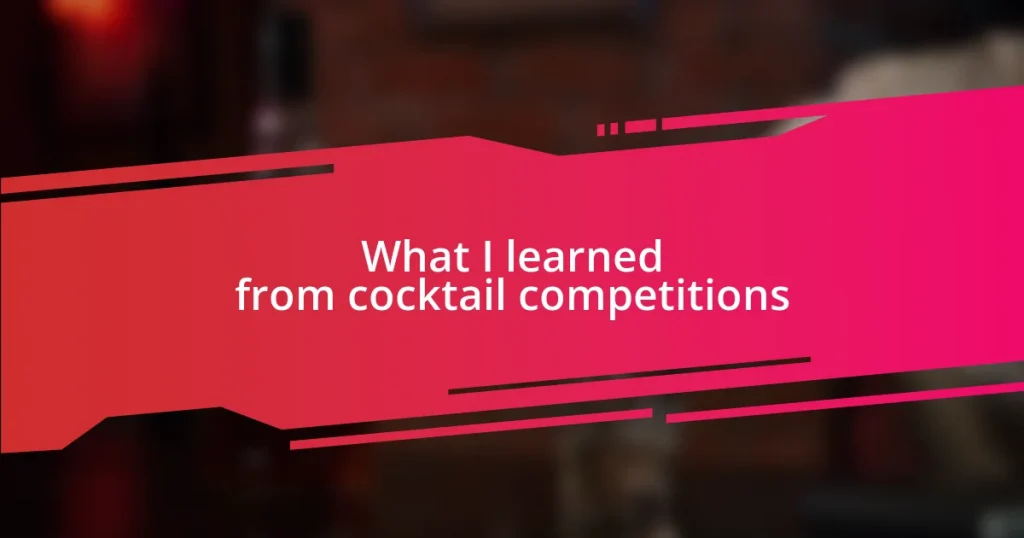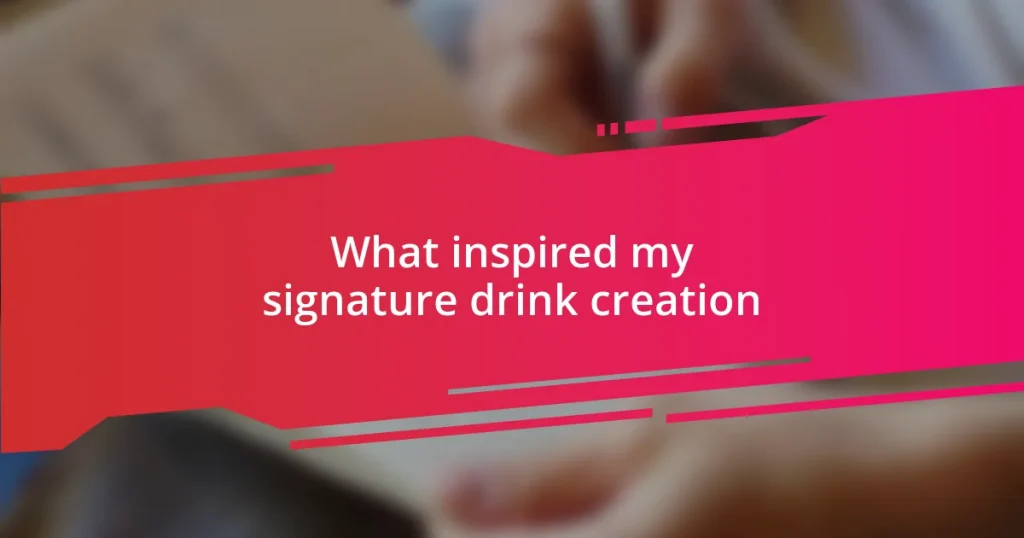Key takeaways:
- Investing in high-quality equipment enhances sound clarity and captures the emotions of live performances.
- Choosing the right location is crucial for immersing in the music experience and obtaining dynamic recordings.
- Effective editing and sharing methods preserve and amplify the essence of live music memories, fostering connections through music.
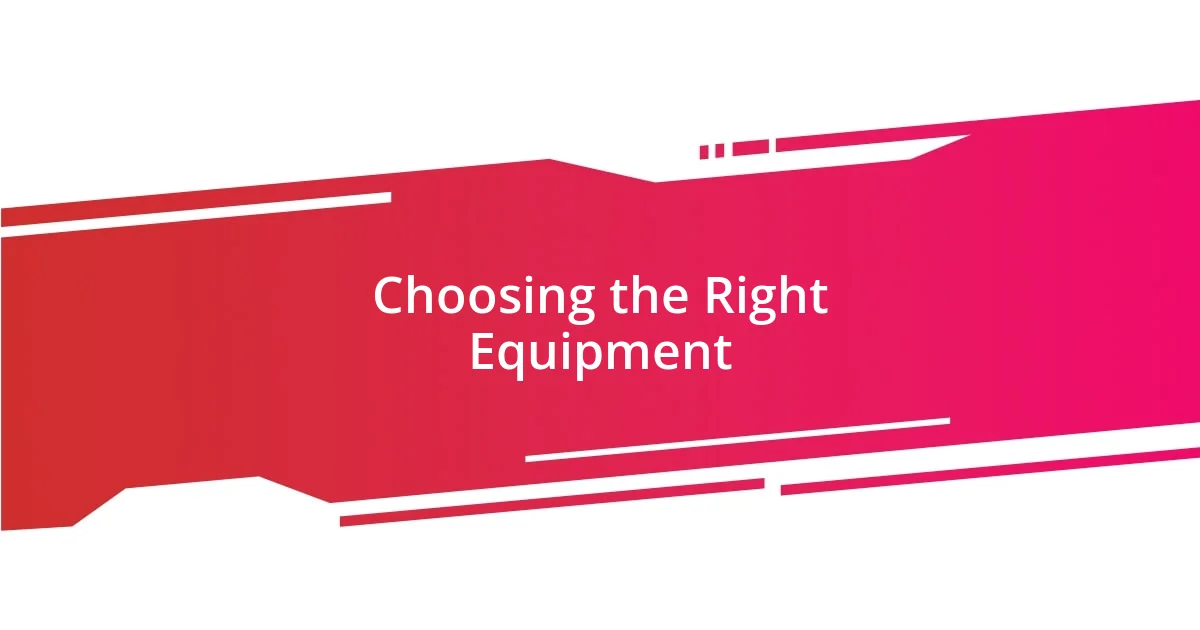
Choosing the Right Equipment
Choosing the right equipment feels like assembling the perfect team for a band. I remember my first concert; I ended up capturing muffled sounds because I chose a low-quality mic. It made me wonder—how often do we settle for less just because we’re unsure of what we really need?
When I upgraded to a portable recorder, my perspective shifted entirely. Suddenly, the clarity of the music was like opening a window to an exciting world. I could hear every instrument, every note, and it brought the memories alive in ways I hadn’t anticipated. Isn’t it amazing how a simple change in gear can transform our experience?
I’ve come to realize that investing in good equipment isn’t just about sound quality; it’s about capturing the emotions of the moment. During one unforgettable concert, I cautiously set up my gear, feeling the electric energy in the air. That night, every strum of the guitar had its own story, and I was thrilled to have my gear ready to capture not just the music but the soul of the performance. What stories could you be missing with the wrong equipment?
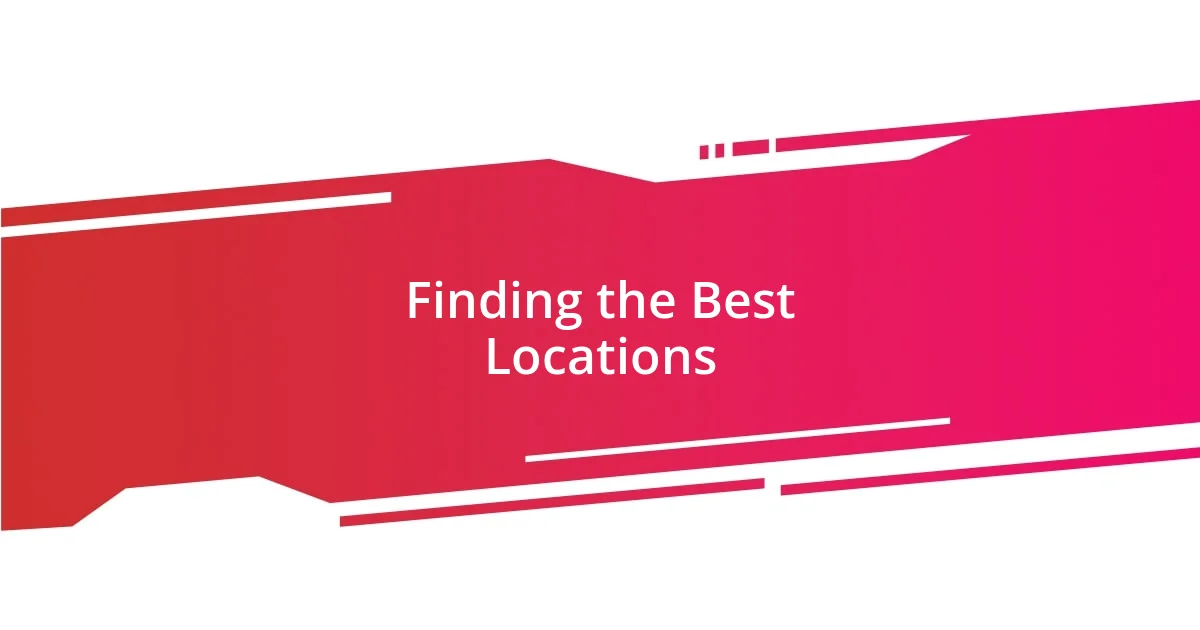
Finding the Best Locations
Finding that perfect spot is essential for capturing live music memories. I still vividly recall attending a small indie show where I chose a location right at the back of the venue. While I had a general view of the stage, I missed the pulse of the audience that night. It taught me that the best locations are often where the energy thrives, allowing me to feel fully immersed in the performance.
When scouting for a location, I always pay attention to the layout and acoustics. I remember one outdoor festival where the sound bounced off the nearby buildings, creating a rich auditory experience. It was intoxicating—every note resonated in a way that made me feel connected not just to the music but to everyone around me. For me, capturing live music is all about being in the moment and finding that sweet spot that heightens the experience.
A tip I often share is to arrive early. Whether it’s a crowded venue or an open-air concert, being one of the first to arrive can significantly expand your options. I often find myself exploring various vantage points before settling in. Once, at a jam-packed festival, I climbed just a few steps up to a small overlook and found the perfect angle. The view was spectacular, and I felt like I had the best seat in the house. Does it get any better than feeling that thrill while capturing incredible memories?
| Location Type | Pros |
|---|---|
| Close to Stage | Excellent view, high energy |
| Back of Venue | Wider perspective, less crowd interference |
| Side Areas | Unique angles, captures audience reactions |
| Overhead/Platforms | Great for overall ambiance, panoramic shots |
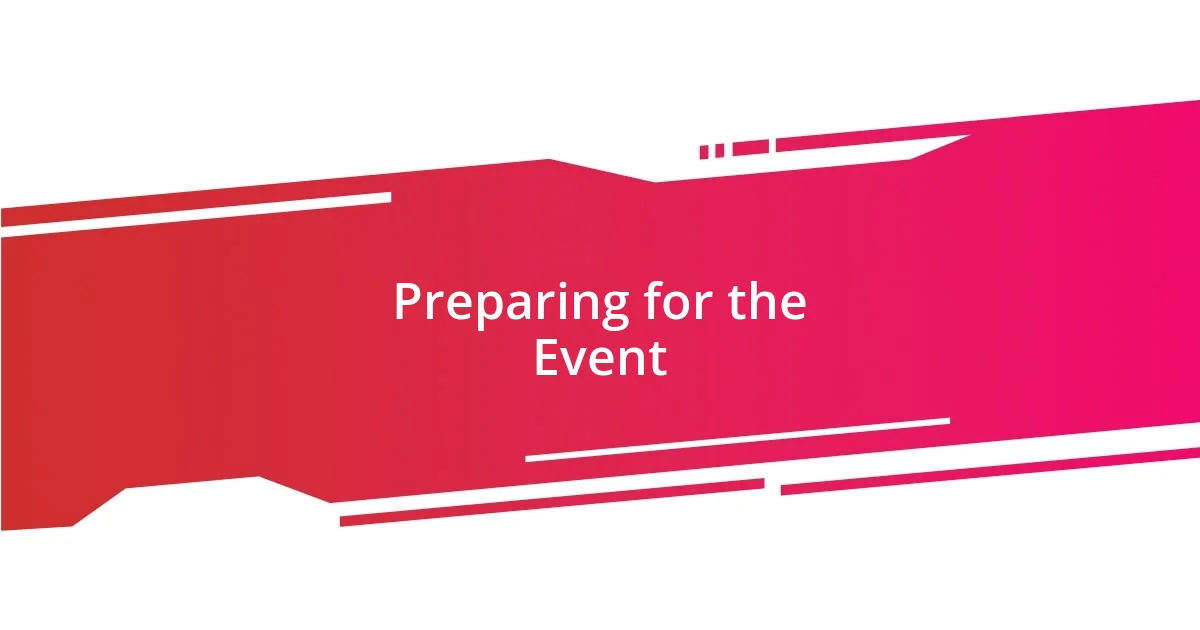
Preparing for the Event
Preparing for a live music event involves more than just packing your gear; it’s about setting the right mindset. I remember gearing up for a popular jazz festival, feeling a mix of excitement and nervous anticipation. I often create a checklist not just to ensure I have everything, but to remind myself of what I’m aiming to capture—like the subtle energy shifts in the music or the vibrant expressions on the musicians’ faces. This preparation allows me to focus entirely on the experience and stay fully present.
Here are a few tips I find invaluable when prepping for an event:
- Do a tech check: Ensure your equipment works flawlessly. There’s nothing worse than discovering a dead battery moments before the show starts.
- Research the lineup: Knowing the artists can help me focus on their signature styles and nuances.
- Prepare for different lighting: Depending on the venue, I often find myself adjusting my settings on the fly.
- Dress comfortably: We all know festivals can last for hours, so I always choose clothes and shoes that keep me comfortable while I move around.
- Hydrate and fuel up: The excitement can easily make you forget to drink water or eat, so I pack some snacks and stay hydrated to keep my energy up.
By gearing up both mentally and physically, I find that I’m much better equipped to capture those fleeting live music moments that make my memories feel alive.
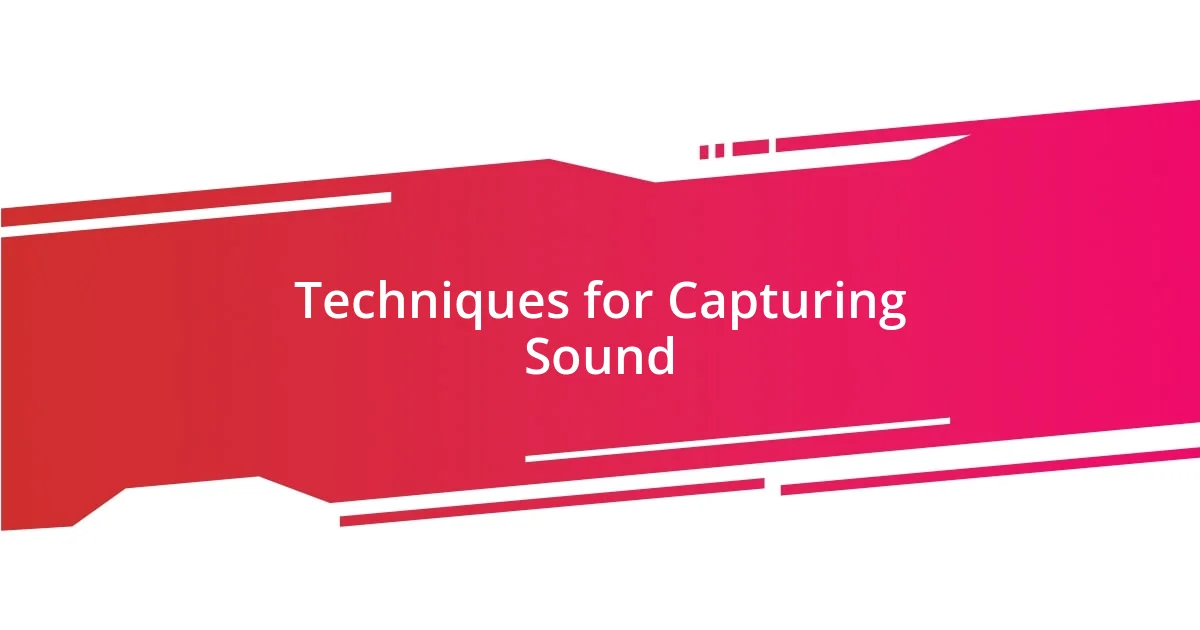
Techniques for Capturing Sound
Techniques for capturing sound can significantly enhance your experience during a live music event. One method I swear by is using directional microphones. I remember attending a folk festival where I set up a shotgun mic, focusing on the lead singer’s voice while minimizing background noise. The result? A crisp, clear recording that captured every nuance of their passionate performance. Have you ever wondered how some recordings seem to draw you right into the venue? That’s the magic of choosing the right microphone for the job.
Another technique I’ve found effective is utilizing apps or external devices to monitor sound levels in real time. I once faced a challenge during a loud rock concert when I realized my levels were peaking. Quickly adjusting a handheld recorder’s settings saved the day, allowing me to preserve the raw energy without distortion. It’s moments like these that highlight the importance of being adaptable. It’s worth asking yourself: are you prepared to make quick adjustments when the unexpected happens?
Lastly, I’ve discovered that layering different audio recordings can truly enrich the experience. Picture it: I was at an electric performance where I recorded the crowd’s reactions with one device while capturing the instrumentals with another. When I combined the two later, the result felt like being transported back to the live event. It added depth and layers to my recordings, creating a richer narrative. Isn’t it fascinating how sound can encapsulate all those emotions and memories?
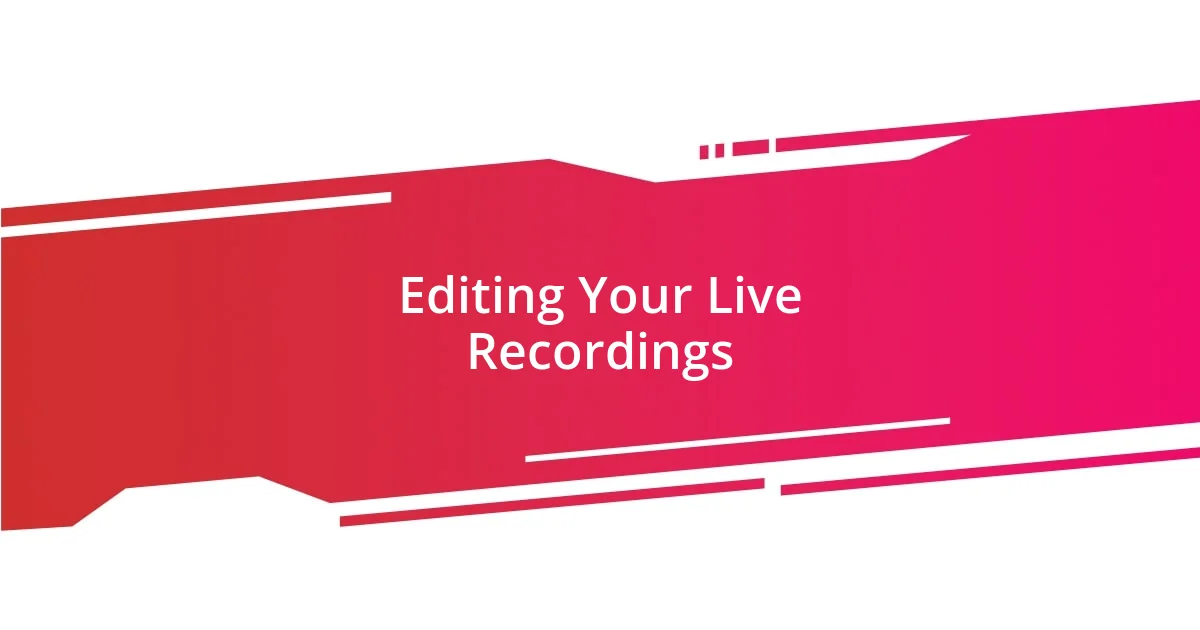
Editing Your Live Recordings
Editing your live recordings is where the magic truly happens. I often approach this stage with a mix of excitement and nostalgia. Just the other day, I was sifting through a set from a local band that completely blew me away. As I cut and trimmed the tracks, I found myself reliving the energy of the crowd, laughing at the unexpected moments, and sometimes even tearing up at a poignant solo. It’s amazing how, with just a few clicks, I can shape those raw captures into something that reflects the spirit of the event.
One technique I rely on involves removing awkward gaps between songs and optimizing transitions. I remember a performance where the guitarist took a moment to chat with the audience, and while it was a sweet interaction, it didn’t quite fit in the flow of the recording. Cutting that bit, while keeping the laughter and excitement intact, allowed me to maintain the momentum. Have you ever found a moment so captivating that you felt it deserved a spotlight? That’s where adding a fade-in or fade-out can really help highlight those special snippets.
Lastly, I love adding subtle sound effects or layering in ambient noise to enhance the recording. Recently, while editing a lively outdoor concert, I included snippets of the audience cheering and clapping between songs. It wasn’t just about the music; it was about capturing that communal experience. It drove home the emotions of the night and made me think: how can I convey the vibes of the event when I share it with others? By focusing on these details, I ensure that my edits tell a richer story, allowing listeners to feel as though they were right there with me.
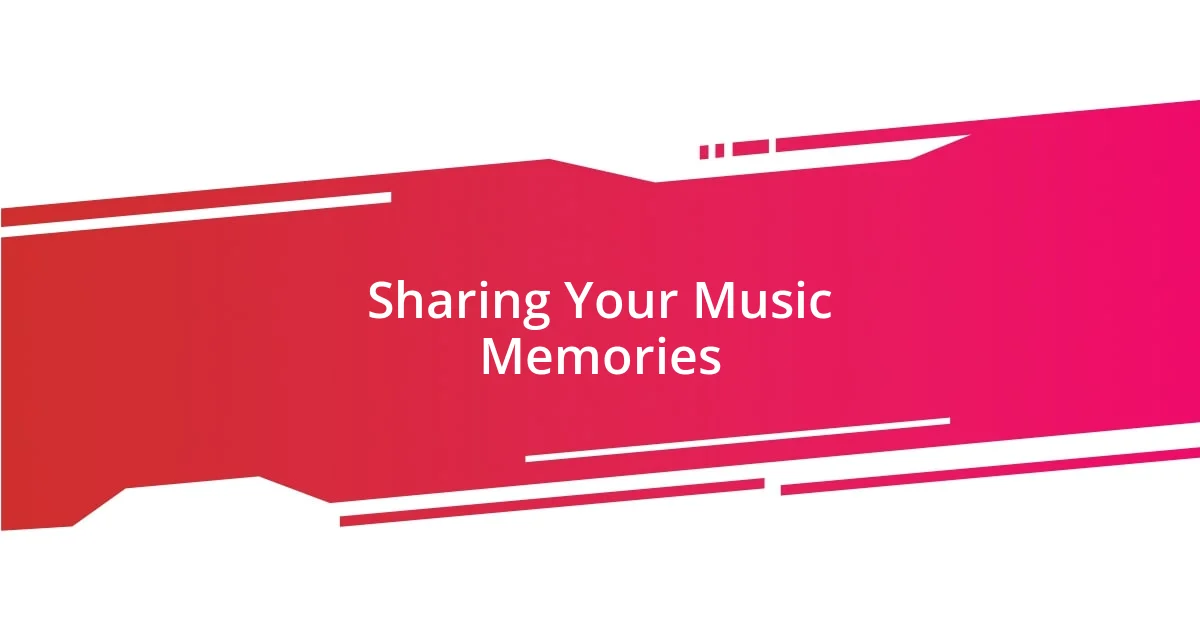
Sharing Your Music Memories
When it comes to sharing my music memories, I find social media to be a powerful tool. I vividly recall attending an intimate acoustic show where the atmosphere was electric. After the concert, I couldn’t wait to post a short clip of the final song online. The comments flooded in, with friends expressing their envy and enthusiasm. Isn’t it wonderful how a simple post can spark conversations and connect us through our shared love for music?
Another way I enjoy sharing is through personalized playlists. I once crafted a playlist from recordings of various live events I attended over the years, each track evoking a specific memory tied to the experience. I shared it with a few close friends, and we spent hours reminiscing about the concerts together. Listening to those songs brought back all the emotions—the excitement, the crowd’s roar, and even the rain-soaked bit of a festival. Have you ever revisited a playlist that took you right back to those moments? It’s a soul-stirring journey that makes the memories feel alive again.
I also love creating physical mementos to accompany my shared experiences. Last summer, I compiled a photo book with snapshots from various concerts, pairing the images with notes about what made each show special. Flipping through those pages transports me right back to those nights filled with music and laughter. It makes me think: how much do we savor our memories when we preserve them in tangible forms? Through these methods of sharing, I believe we keep the spirit of live music alive, connecting our past with others’ present.
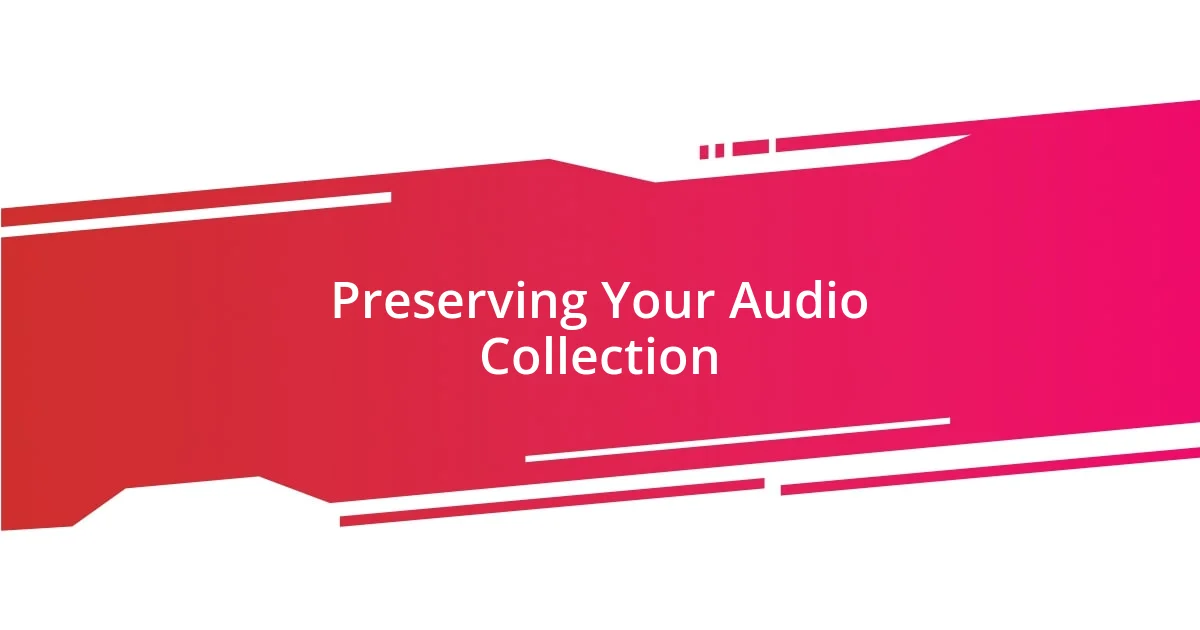
Preserving Your Audio Collection
One of the most rewarding aspects of preserving my audio collection is the process of organizing it in a way that feels personal and meaningful. Recently, I dedicated an afternoon to categorizing my recordings by date and artist. As I sifted through countless memories, I couldn’t help but smile at the nostalgia washing over me. Each track held a story, sometimes even eliciting specific emotions. Have you ever listened to a song and been transported back to a moment in time? That feeling is why I invest the effort.
I also place great importance on backing up my audio files. After losing my original recordings from a summer festival due to a hard drive failure, I quickly learned my lesson. Now, I use a mix of cloud storage and external hard drives to safeguard my precious memories. I often think about how devastating it would be to lose those irreplaceable captures. It’s like losing a part of my musical journey. Do you have a backup plan in place for your own collection?
Additionally, I’m a firm believer in maintaining the quality of my audio files. I’ve discovered that converting them into high-quality formats ensures they withstand the test of time. Once, I took a particularly special live show and re-saved it in a lossless format. Doing so not only preserved the richness of the sound but also made me feel closer to that unforgettable night. It’s incredible how audio fidelity can enhance the experience. What steps do you take to ensure your favorite tracks sound their best?




